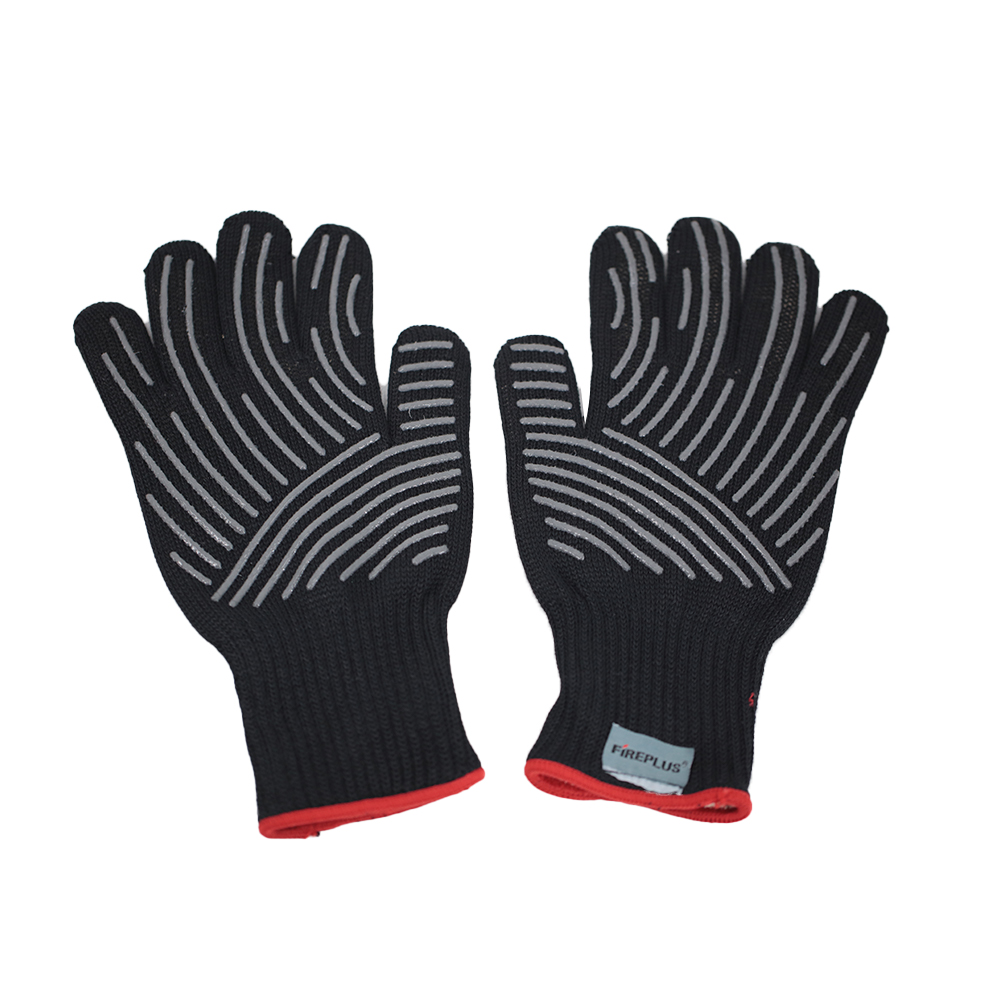Nitrile Butadiene Rubber (NBR): Nitrile butadiene rubber can be applied to woven and sewn gloves by screen printing, foam coating and dip coating methods, etc. It has excellent mechanical properties (abrasion resistance, cut resistance, tear resistance, puncture resistance), soft and elastic, and comfortable to wear. The material has good grip, and the grip of the glove can be further enhanced by foaming the nitrile during dipping. This process results in an open surface texture and better surface properties, improving the glove's ability to grip wet, greasy objects. Nitrile is also very suitable for use at high temperatures, because even at very high temperatures, nitrile will not melt, thereby avoiding product contamination, nitrile dipped gloves are currently the most widely used of all labor protection gloves.
Extended Aramid Heat Resistant BBQ Gloves
PROFESSIONAL DESIGN: Extended Aramid Heat Resistant BBQ Gloves are made of top quality aramid fabric, known for cutting resistance and heat resistance. Can withstand high temperatures. We add a cotton lining to our BBQ mitts to keep them comfortable. Non-Slip: Each Extended Aramid Heat Resistant BBQ Glove is made of non-slip food-grade silicone with a five-finger design that allows you to flexibly grasp cooking and grilling tools, giving you more flexibility to safely and stably hold a variety of hot and smooth items. So grilling gloves are perfect for grilling, cutting, cooking, baking or handling items in hot kitchens and outdoors. UPGRADED SIZE: We extend the size to protect your forearm. The cuff width allows you to slip on and off easily and fits most hands. The right and left hands of the grill mitt are exactly the same, no need to waste time finding the right hand.
Polyurethane (PU): Polyurethane is the toughest mainstream polymer coating with unmatched mechanical resistance to abrasion, cuts, tears and punctures. Polyurethane is therefore ideal for the production of cut-resistant gloves, where its superior mechanical properties complement the high-quality fibers of knitted gloves. And, even with a much thinner coating than other materials, polyurethane can provide the same level of protection because it's extra tough. Therefore, for some applications where a good tactile feel is required, polyurethane is the best choice.
Dimer: Dimer is a mixture of nitrile and polyurethane. It combines the best properties of two polymers to provide excellent mechanical properties such as excellent cut, abrasion, tear and puncture resistance, as well as good grip, softness and elasticity. </div><div>
Polyvinyl Chloride (PVC): Over the past decade, PVC has become a very popular material for the production of inexpensive rubber-dipped gloves. In recent years, it has gradually been recognized as an ideal choice for the production of palm-coated gloves. Foam-coated gloves made of PVC have a good grip on wet and dry objects, and their mechanical properties are not a bit inferior to those of nitrile and polyurethane gloves.
Micro Polishing Nitrile Material: Micro Polishing is an innovative high grip glove polishing technique. Micropolishing technology is divided into two stages. First, a nitrile waterproof coating is applied to the glove, followed by a second nitrile coating to create a texture of thousands of fine pores that not only remove oil and other liquids from the surface, but also provide Safe and reliable grip. Not only does the micromachined material provide better grip than foam polish, but the nitrile material also offers excellent mechanical resistance to abrasion, cuts, tears and punctures.
Natural Rubber (Latex): Natural rubber has been a popular material for the production of glove coatings for many years. Typically, natural rubber can provide a slightly thicker coating thanks to polishing techniques, which give protective gloves excellent grip and mechanical protection. However, the latex component of natural rubber can cause allergic reactions in some people.